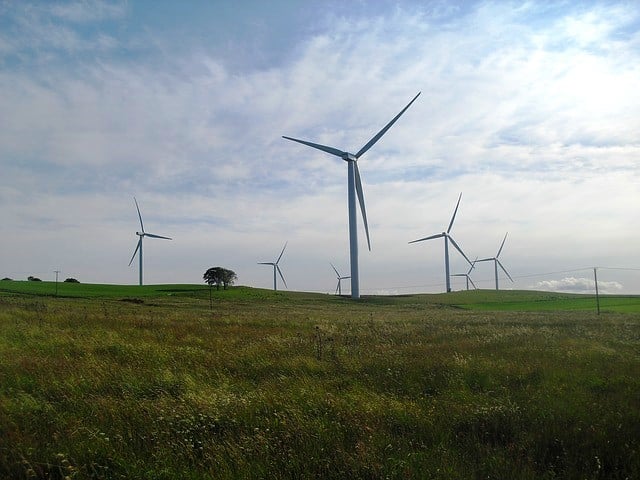History of Wind turbines
Using wind for energy
Wind turbines or wind mills are relatively recent innovations in using the energy of air movement. Since early recorded history, people have utilized wind energy. One of the earliest way to capture and use this energy is the humble boat sail. Sails propelled boats along the Nile River as early as 5000 BC.
The first known wind turbines were in Persia as early as 200 B.C. and pumped water and ground grain. The same type of these windmills later came into the Roman Empire by about 250 A.D. By the 14th century the Dutch were using wind turbines for pumping and as mills.
As the United States’ westward expansion took place, over six million wind mill installations happened, says the US Department of Energy. Perhaps it wasn’t the railroad that was the foundation of modern America, but the windmill!
Using wind for electricity generation
The first wind turbine for producing electricity was built in Cleveland, Ohio by Charles F. Brush in 1888. This was only a couple of decades after steam turbines started to create electricity. Just imagine where we might be today if wind had pre-dated steam as a way of producing electricity.
By 1908 there were 72 wind-driven electric generators ranging in capacity from 5 kW to 25 kW. By the 1930s the turbines were usually in remote areas to produce electricity as the electricity distribution grid was not widespread.
The predecessor to modern horizontal-axis wind turbine was in service at Yalta in the now-disputed Crimean peninsula in the then USSR in 1931. This was a 100 kW generator on a 30 m tower, connected to the local 6.3 kV electricity distribution grid. According to the records, its annual load factor was 32% which is not much different from a current wind turbine.
By 1900 early wind adopters the Dutch had about 2500 wind turbines producing an estimate peak power of about 30MW.

Horizontal axis wind turbines
Horizontal axis wind turbines have the main rotor shaft and electrical generator at the top of a tower, and must point into the wind. Small turbines are pointed by a simple wind vane or tail. Large turbines often use a wind sensor coupled with a servomotor. Most large turbines use a gearbox, which turns the slow rotation of the blades into a quicker rotation that is more suitable for generating electricity.
Blade placement and turbulence
A tower produces turbulence behind it, so the turbine usually points upwind of the tower. Blades for an upwind vertical axis wind turbine are stiff to stop the blades from being pushed into the tower by high winds. Downwind wind turbines are possible, despite the turbulence, because they don’t need an additional mechanism for keeping them in line with the wind. And in high winds, the blades can bend which reduces their swept area and thus their wind resistance. Because turbulence leads to fatigue failures and reliability is very important for remote area power systems, most horizontal axis turbines are upwind machines.
Vertical axis wind turbines
Vertical axis wind turbines have the main rotor shaft running vertically. The advantages of this configuration are that the generator and/or gearbox can be at the bottom, near the ground. Therefore the tower doesn’t need to support the additional weight, and that the turbine doesn’t need to point into the wind. They generally also operate at lower wind speeds. However, they are not as efficient at extracting energy from the wind.
See the following article to determine Is wind energy right for you?
Modern wind power can act as a supplement to solar if you are keen to use as much self-generated renewable power as possible. It is challenging to implement in urban and suburban areas due to the esthetic considerations that local councils and residents observe.
If you have interest in wind power, please contact us. While Energy Matters does not install wind systems directly, we can put leading providers in touch with you.







































